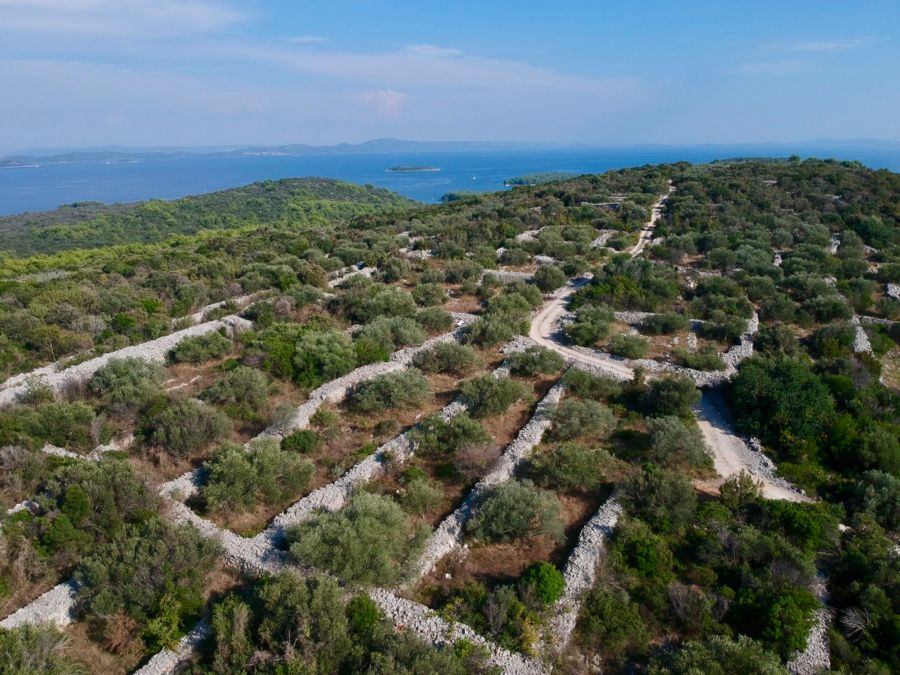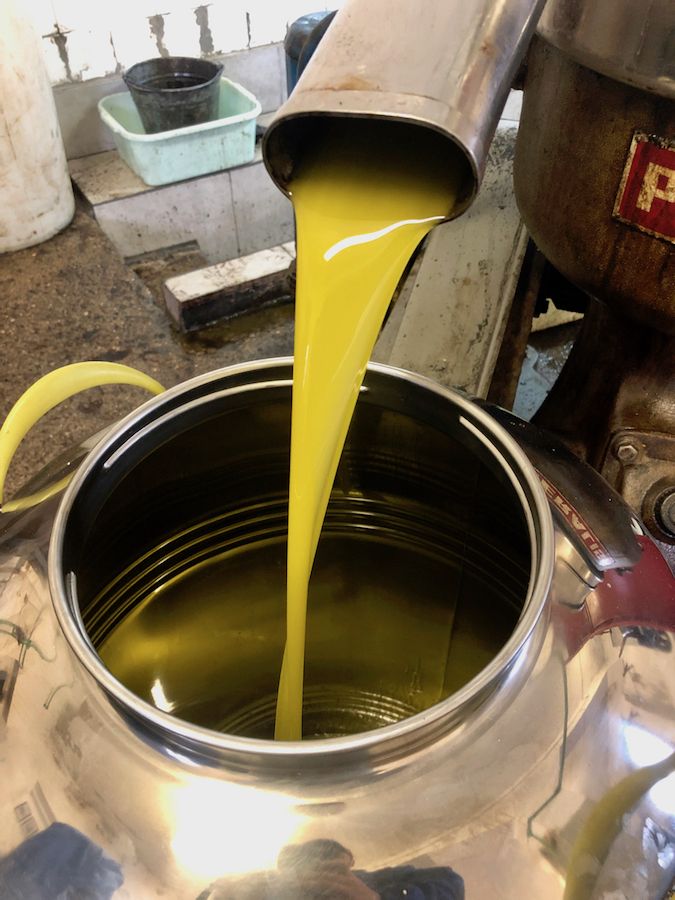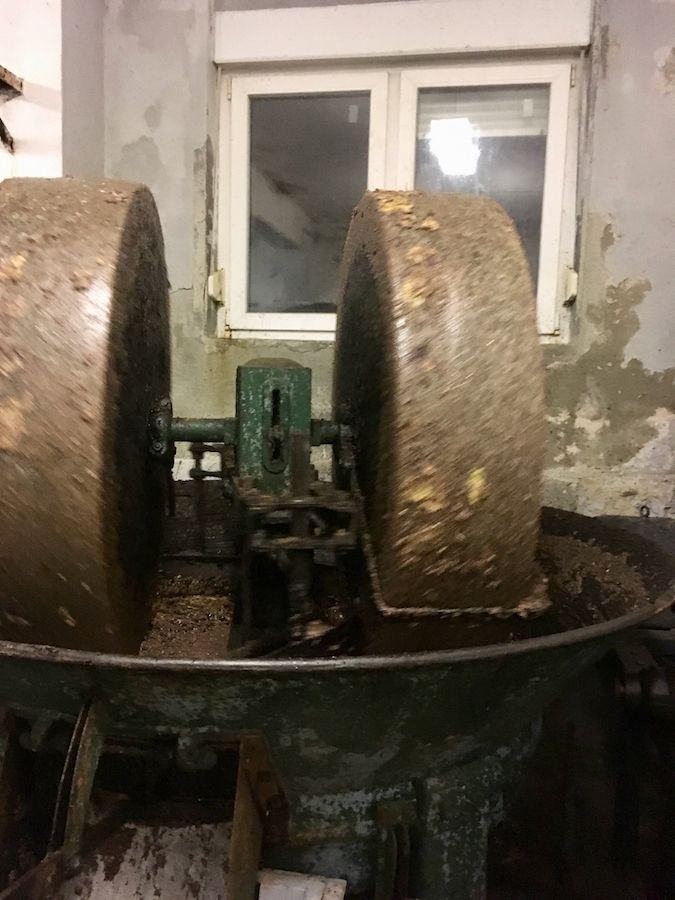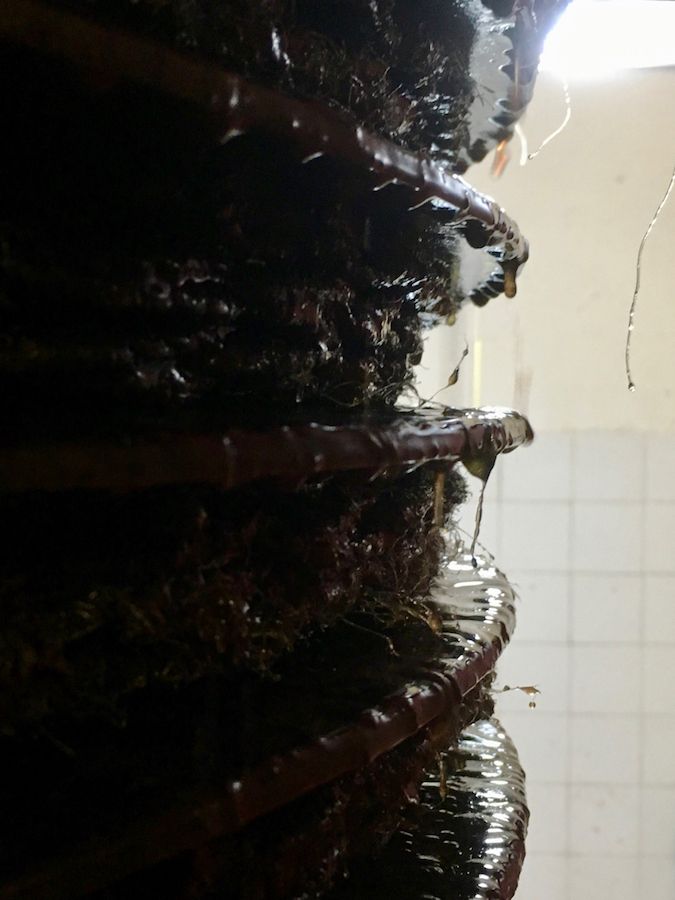Dolac Seller Explains Why Dalmatian Olive Oil is Better Than Istrian
March 6, 2022 - In the Dolac market in Zagreb, spring is already starting to be felt in the dozens of its stands, and also in the good spirits of its vendors and consumers. A Dolac seller shared with a Croatian outlet not only a delicious and healthy soup recipe but also explained why Dalmatian olive oil is better than Istrian.
Spring has arrived at the Dolac market. The sellers' stands are green with early spring crops and nothing is missing. Asparagus, bear onion, watercress, young spinach have arrived ... Sardines have also returned to the fish market but at the new price of 30 kuna per kilo, which caused dissatisfaction among many because they are now ten kuna more expensive than last year.
Dalmatian Ivo Marić welcomed Večernji List at his stand. A few weeks ago he shared with the same Croatian media outlet his recipe for raštika in Dalmatia, which turned the Dolac seller into a real internet sensation. This time, he shared with them a simple recipe for vegetable soup, but also explained why Dalmatian olive oil is better than Istrian.
- ''This is a quick recipe for vegetable soup intended for ladies who are in a hurry and do not have time to cook, and want to eat healthily. You need one broccoli, two potatoes, kohlrabi, and carrots. Cut them into cubes, put to boil with a little salt pepper, and olive oil. When the vegetables soften, add the pasta and that's it.'', he said. ''The secret of this soup is in quality olive oil. Without a good oil, there is nothing'', Marić pointed out.
- ''And which oil is better, Istrian or Dalmatian?'', a reporter from Večernji List asked the Dolac seller.
- ''They say it's better in Istria, but they buy olives from Brač. Half a liter is a hundred kuna for them, but they buy olives from Brač. They say that the stronger the oil, the better, but the stronger it destroys the fish later. When it's strong, it burns, coughs, and destroys the fish, even tourists don't want it when it's too fierce. They say oil with more acid is better. Old people in Dalmatia throw olives into the sea to kill the bitterness, now they say it's not good. It seems that everything that is old is no longer valid, now everything is modern and mostly worse than before.'', Marić concluded.
When it comes to olive oil, Croatia is one of the leading countries in the industry. From Istria to Dalmatia, you can find all the information you need to know about the origins, processes, and where to buy Croatian olive oil on the Total Croatia page, now in your language!
For more on Croatian products, producers, companies, and exports, make sure to check out Made in Croatia.
World Olive Picking Championship to be Held on Brač
Postira, a small town and municipality on the island of Brač has been organising the unofficial World Olive Picking Championship for the past two years, and in 2019 the third edition of the prestigious competition will be held from the 10th to the 13th of October.
The aim of the event, organised by the Tourist Board and the Postira Agricultural Cooperative, is to promote the lifestyle linked to the olives, olive growing, picking, making olive oil and other connected activities. Last year the competition saw participants from 11 European countries: Slovenia, Hungary, Montenegro, The Netherlands, France, USA, Great Britain, Sweden, Bosnia and Herzegovina, Spain and local participants from Croatia (people from Postira and Dol, who are "playing" at home. The list of the participating countries obviously includes some Mediterranean countries, where the tradition in the production of olive oil goes back for centuries, but also there are non-Mediterranean coutries, with no tradition whatsoever.
In 2018 the hosts, Croatian team, won the competition with 67 kilograms of olives picked. The runners-up were the team from Montenegro, and the podium was completed by team Slovenia, to keep everything amongst the neighbors.
The rules of the competition state that the teams are made up of four members (two female and two male pickers), and there are several categories of olive picking in which the teams will face off: the traditional "na sakete" picking method (meaning "on the bags"), as well as the modern picking methods, using shakers and rakes. In addition to the competition itself, workshops, tastings (wine and other kinds!), tours and entertaining will be held.
The competition is one of the many things held on Brač each year after the very intense high-tourist season. After the succesful inaugural edition held last year, the Orienteering Club Maksimir will organize O-BrOČ, the Brač Orienteering Championship, a four-day event expected to bring several hundred nature-lovers and runners to Brač this year (hopefully, to a somewhat nicer weather than last year!)
Olive Oil Rejuvenates A Croatian Village, One Month A Year
“E, i?”
That’s how the day starts at about 4 p.m. Or better put, how the day starts to end. With a “Yeah, and?”
“I picked about maybe about 70 kilos. And it's hot,” I replied, throwing myself onto a barstool and exhaling. “I shouldn’t, for the love of God, be wearing short sleeves.”
Not in mid-November. Not during the olive harvest.
Scattered around the bar are familiar faces. There’s a cousin... No, not a cousin. Just a friend’s father. Might as well be a cousin.
You’ve got the carpenter who seems to have had a mustache his whole life, and his lanky brother, a mechanic who hasn’t met a day without shaving first. There's that chainsmoker with the salt-and-pepper hair that swoops back over his bald spot and curls up back behind his ears. He left decades ago but comes back every November for the harvest.
Then there's the stumpy, bald guy with the lopsided eyeglasses… Well, he’s always here.
These folks, they all speak this village’s variant of “čakavski”. They can tell you which house they were born in — it inevitably isn’t the same one they were raised in. They all laugh at each other’s faults, yet burst into rage-filled arguments at the slightest provocation.
They all hail from Mali Iž.
No zimmer frei seeking a liqeur not on the shelf. No members of the Canadian or Aussie diaspora in Ray Ban sunglasses puncuating their conversations with English exclamations (mostly “faken”).
And so it goes, every year when the olives switch from shiny green orbs to blotchy purple droops, a vast collective of Mali Iž’s local diaspora descend onto this island, coming “home” if only for a few weeks. Folks who left long ago for brighter prospects and bountiful opportunities. For bigger dreams and better odds.
They left, frankly, because they didn’t want to spend a lifetime doing this; depending on the whims of a tree which produces fruit whenever the hell it feels like.
The irony isn’t lost on the mass of Malo Ižani flooding the island to pick olives. They know they’ve come back to do the thing they tried to escape.
In the process, they accidentally show what the island could have been if they stayed. Vibrant, alive, unique. To borrow a phrase: Iž, Full of life.
Because on Iž and a few other Dalmatian islands like it, olives weren’t a happy hobby, or one of a myriad of economic sectors. It wasn’t a fad.
Olives were a means of survival.

When the first settlers arrived on this island about 1,000 years ago, they were greeted by a heap of limestone and dolomite ridges, covered in aggressive weeds which survived despite lackluster soil and arid conditions.
It was not screaming out for an agricultural boom. Yet the island’s owners — Zadar’s aristocracy and the Church — wanted some return on investment from their island holdings, while safely tucked away in their mainland villas. Their needs were met by some willing and needy economic dregs seeking something to keep them alive.
Those early settlers — my ancestors — broke open the hard rocky shell of this island quite literally by hand, until they found soil worth propagating. They tilled, dug, fertilized and planted olives.
The same olives I’ve spent the better part of five years rejuvenating. The same olives which, yesterday, gave me this…

Hazards And Hope At The Mill
“I tried Viagra. Doesn’t work for me.”
This is how my day at the mill begins — or starts to begin. Our town “mechanic” is laying bare the trials and tribulations of life as a 30-something transplant who moved to this island from Zagreb. He’s black and brown with the grease of mashed up olives, his hands and face shiny like a newly-minted coin.
“Yeah, I already heard this one” I tell him, yet he continues, “Viagra only makes me hungry!”
Inside the mill, the grindstones are whirring over freshly-dumped olives, which pop and smack as they’re crushed. The soft, lilting smell of freshly-pressed olives stands stout in the air, as immovable as the hydraulic press which produces it.

Then there’s the “separator,” a barrel-shaped device which whirls the freshly-pressed oil to remove any last bits of water and solids, then spits it out of a tongue-like tube.
It represents the terminus of an annual olive journey that starts with fertilizer and ends with a gas-powered trimmer. Rituals of all sorts are peppered along the way: grilling food while burning pruned branches; the backaches felt after digging fertilizer into the soil with a crooked spade known locally as a motika; age-old arguments over pruning techniques and modern vs. traditional agronomy.
Then, on your day at the mill, it’s customary to bring the workers some form of sustenance, booze and deserts.
And perhaps entertain the odd erectile function story out of sheer good will.

Find someone old enough on Iž and they’ll tell of a life completely consumed by the soil and sea. Grapes, figs, pomegranates, plums, and the occasional almond tree, accompanied the usual vegetable gardens and potato fields. And perhaps in particularly fruitful (read: profitable) years, cured meats.
Yet at the heart of it all was the olive — a source of food, light and heat. It was also, for many, equal to any currency. (It certainly outlasted quite a few.)
Iško ulje could get you cheese from Pag, wine from Zadar and a handyman to repair something around the house, all in a shadowy barter economy that still exists if you make the right offer.
Now though, Iž's oil is mostly the domain of hobbyists and romantic nostalgics looking for a brief dose of their past lives.
More than any other summer vacation, or one-off family gathering, olive season brings out the final vestiges of what was once a thriving micro-culture. One has to wonder: why can’t olives bring it back again permanently?
To read more about olive picking in Croatia, click here.
Ugljan Celebrates Wonders of Olive Oil
The island of Ugljan shows some love to an enormous part of Dalmatia's rich herigate - olive oil.
Istrian Olive Oils Win Big at International Competition in New York
Croatian olive oils took away 27 gold medals and 11 silver medals at NYIOOC 2018
Exhibition of the Week: Sweet, but Not Honey; Bitter, but Not Wormwood
Dalmatian olive culture pays a visit to the Croatian capital
Olive Oil from Šolta Island Becomes Hit in United States
A litre of 'Šoltansko' olive oil goes for $100 on the US market
Drought in Dalmatia: No Rain Since May, Crops Deteriorating
The summer of 2017 broke a couple of temperature records, but there's also a dark side to it: Dalmatia hasn't seen any serious rain since May.
Meet This Year's "Noćnjak" Champion Olive Oil Producers
Annual Noćnjak international awards were given out to best olive oil producers


